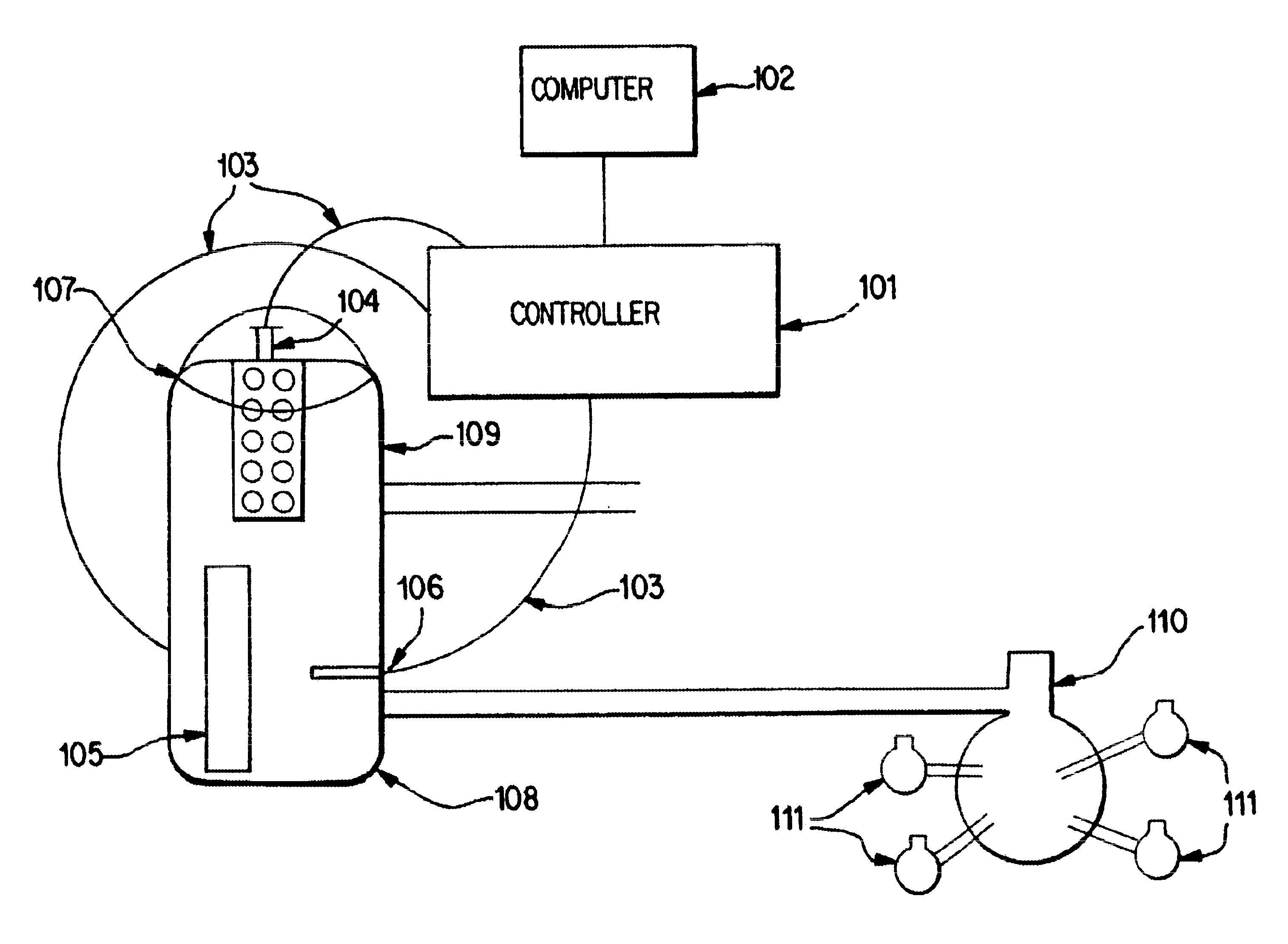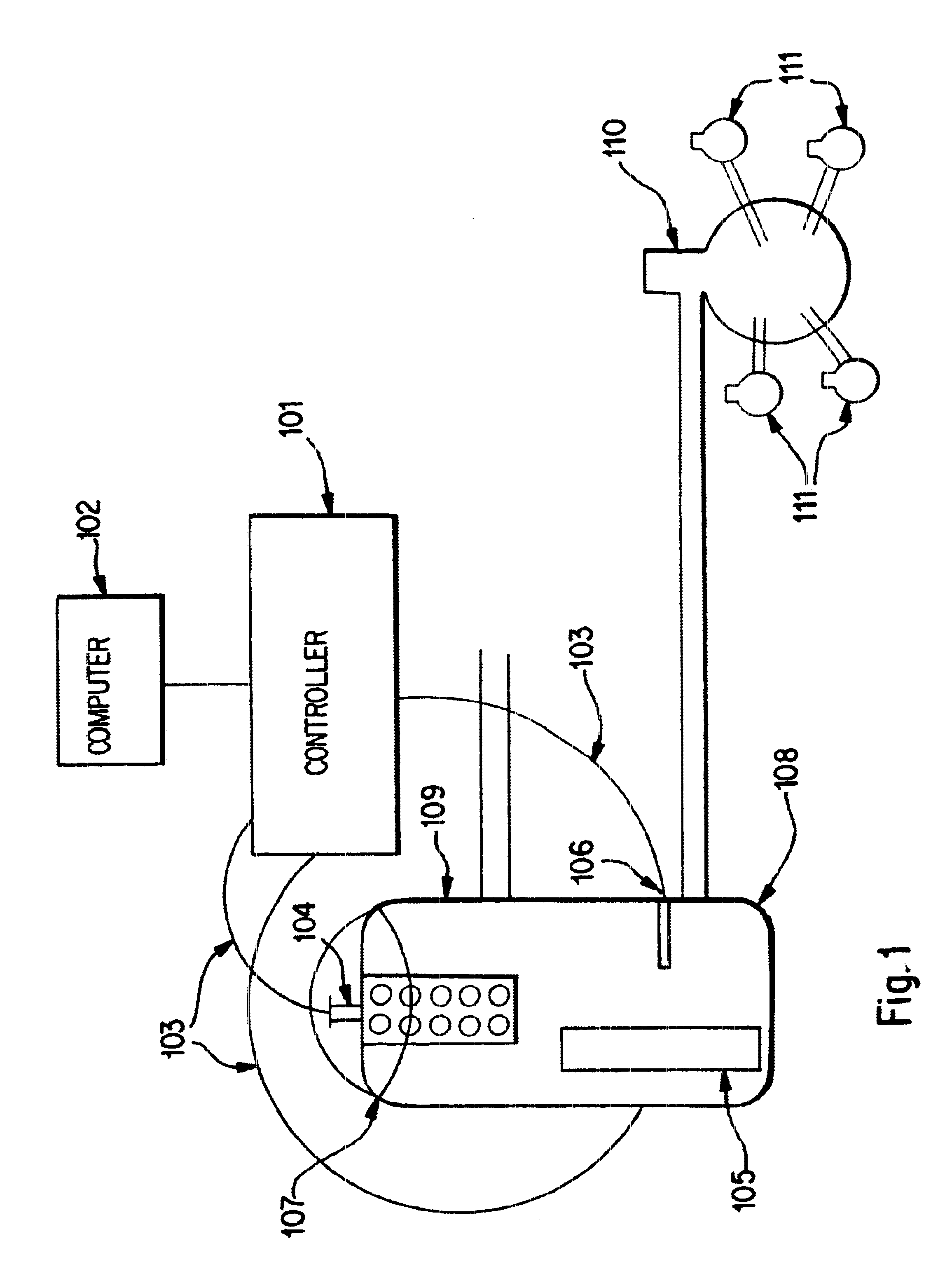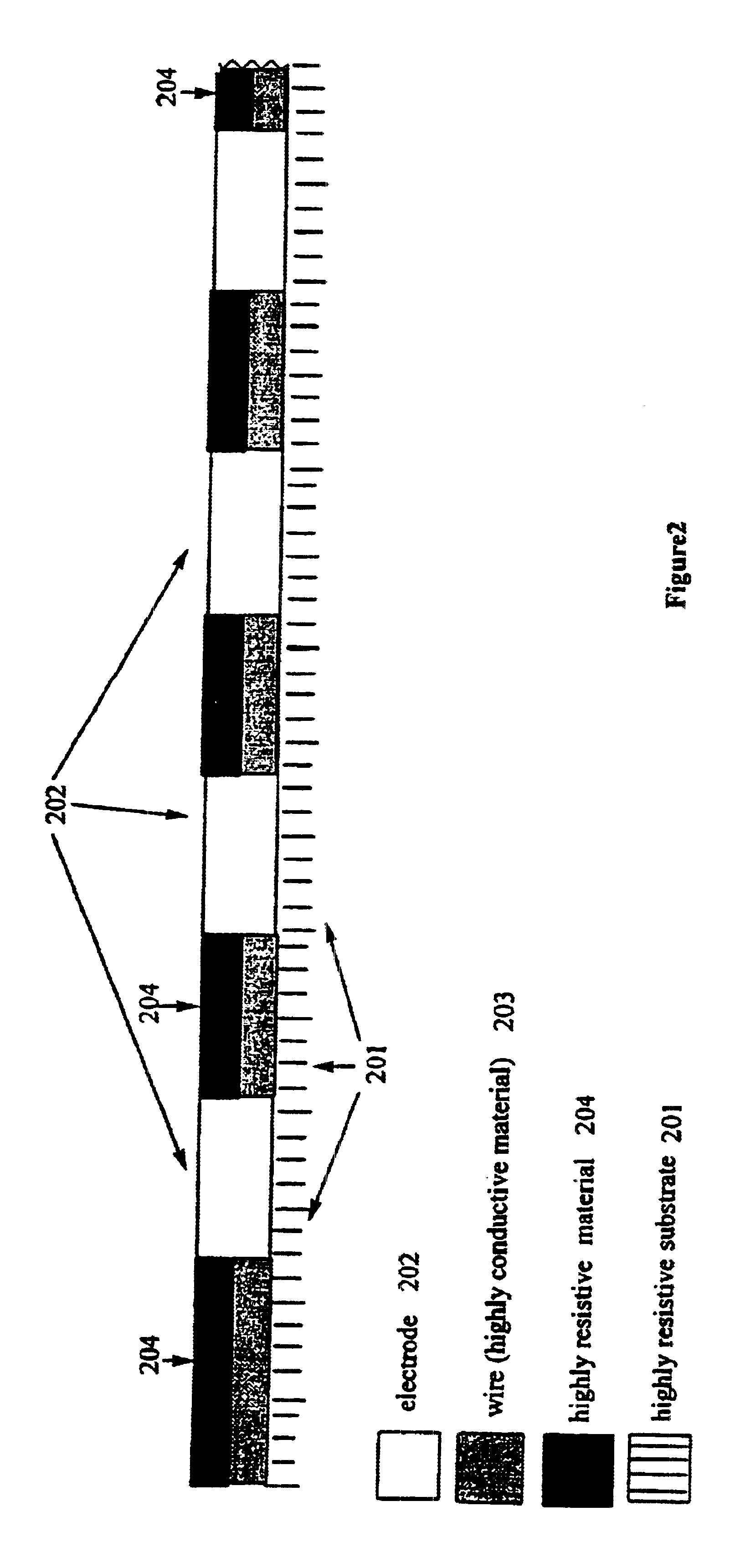Electrode array for development and testing of materials
a technology of materials and arrays, applied in the field of materials arrays for material development and testing, can solve the problems of large number of materials that are predicted in a group that are too large to properly analyze, large number of predicted useful materials unexplored, and little work to ensure the array of materials
- Summary
- Abstract
- Description
- Claims
- Application Information
AI Technical Summary
Problems solved by technology
Method used
Image
Examples
example 1
Synthesis and Screening of Anode Catalysts for Fuel Cells
The fabrication and testing of binary phase space at a resolution of one atomic percent (e.g. 100%Pt-0%Ru, 99% Pt-1%Ru . . . 1%Pt-99%Ru, 100%Ru) requires the fabrication and evaluation of 101 different alloy combinations. The addition of another component increases the number of different ternary compositions to 10,100 and the addition of a fourth component increasing the number to over 1,000,000. The testing and fabrication of such large numbers of materials using traditional methods is unwieldy as to make it experimentally impossible. Consequently, researchers have had to rely on chemical intuition, and scant experimental results, to lead them in the direction of improved catalyst systems. Combinatorial catalyst electrodeposition directly onto an electrode array allows rapid preparation and testing of samples.
Binary compositions can be electrodeposited from aqueous solutions containing metal complexes of the desired metals, ...
example 2
Synthesis and Screening of Cathode Catalysts for Fuel Cells
The combinatorial electrochemistry techniques described above are used to synthesize and characterize known and new catalysts for use as cathode catalysts in fuel cells. The primary desired characteristic in this example is a high rate of reduction of oxygen. A secondary desired characteristic is a high selectivity for oxygen over other species such as methanol.
The aqueous salt solutions used, for example, may include H.sub.2 PtCl.sub.4 (tetrachloroplatinic acid) and Cr.sub.2 (SO.sub.4).sub.3 (chromic sulfate) with NaNO.sub.3 electrolyte. Electrodeposition takes place in a typical three electrode configuration comprised of a reference electrode, a counter electrode and the working electrode array. Electrodeposition is carried out under a variety of concentrations, flow rates, currents, potentials, and temperatures to achieve the most smooth and reproducible surfaces. Typically, overpotential deposition, high frequency pulse ...
example 3
Deposition From Solutions of Metal Precursor Complexes
Deposition from solutions containing the metals as precursor compounds is a flexible aproach, especially with regard to depositing more than one element simultaneously. In the simplest embodiment of this approach, the solution contains a mixture of metal alkoxides. Deposition occurs via an electrochemical process.
For example, if the metals are present as alkoxide precursors and dissolved in a mixed alcohol / water solvent, the deposition could be effected by creating oxidizing conditions at a particular electrode in the array of electrodes. These oxidizing conditions can produce protons, thereby driving the decomposition of the metal alkoxide precursors, precipitating the metal oxide product, and depositing a mixed metal oxide on the electrode. In this simplest case, the deposit comprises a metal oxide with the metal composition being defined by the relative amounts of the metal alkoxide precursors in the original solution.
Control ...
PUM
| Property | Measurement | Unit |
|---|---|---|
| diameter | aaaaa | aaaaa |
| diameter | aaaaa | aaaaa |
| molar concentration | aaaaa | aaaaa |
Abstract
Description
Claims
Application Information
 Login to View More
Login to View More - R&D
- Intellectual Property
- Life Sciences
- Materials
- Tech Scout
- Unparalleled Data Quality
- Higher Quality Content
- 60% Fewer Hallucinations
Browse by: Latest US Patents, China's latest patents, Technical Efficacy Thesaurus, Application Domain, Technology Topic, Popular Technical Reports.
© 2025 PatSnap. All rights reserved.Legal|Privacy policy|Modern Slavery Act Transparency Statement|Sitemap|About US| Contact US: help@patsnap.com



